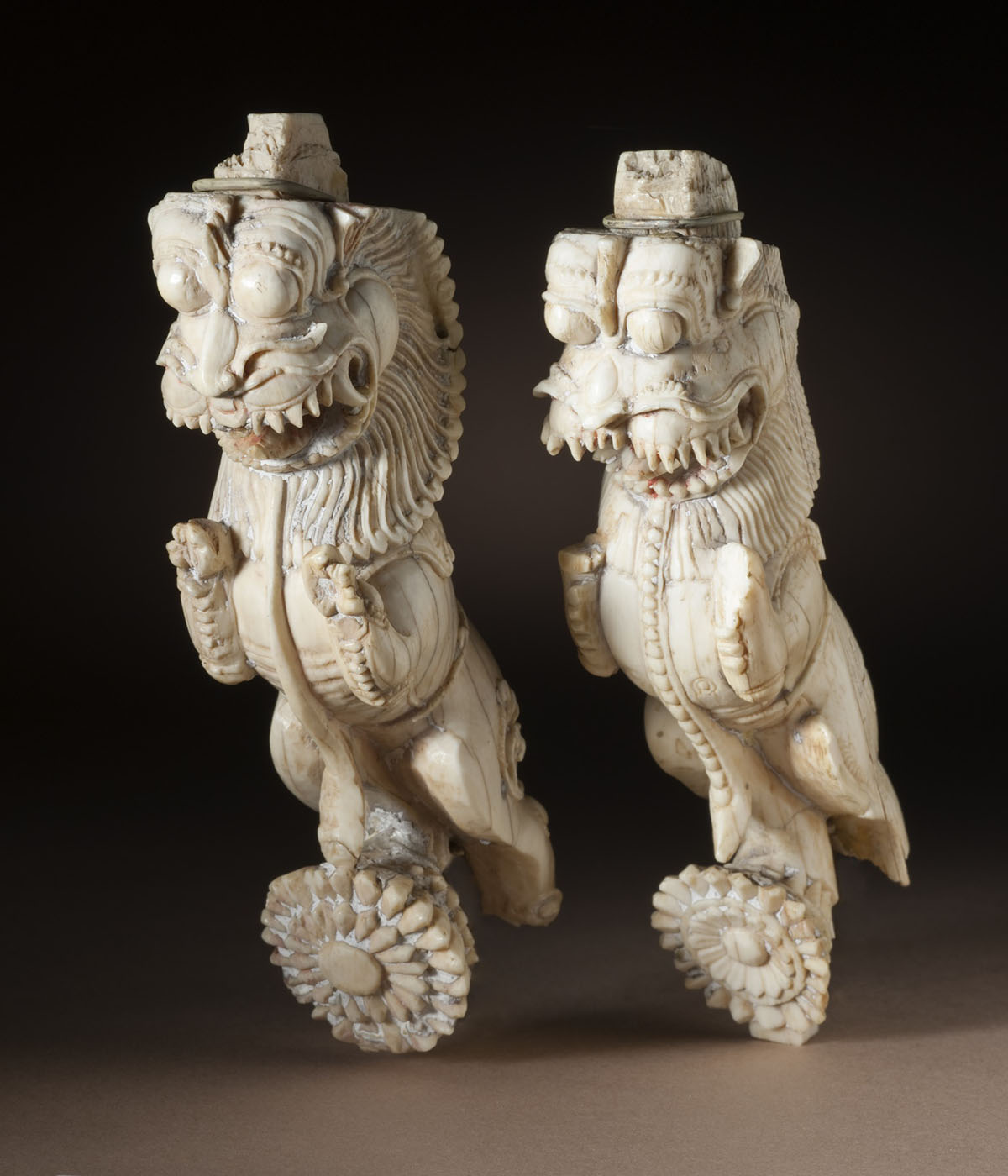ARTICLE
Yali
Yali figures are considered to be a type of grotesque sculpture, meant to inspire fear and awe, and have iconographies similar to other composite mythological creatures, such as the hippogryph and sphinx of ancient Mesopotamia and Egypt. They are also associated with the mythical griffin. In northern India, yalis are common in the gajasimha (Sanskrit for “elephant-lion”) motif, depicting a fight between a lion and an elephant, showing the lion in a victorious pose.
Yali figures are believed to act as guardians and protectors, shielding a temple from threats. The tame form of the yali, typically shown flanking short stairways attached to temple plinths with waterfalls emerging from their open mouth, is known as the surul-yali. Yalis were also considered divine vehicles for deities, and were used to signify heroism and the elemental forces of nature, tamed and controlled by being incorporated into architecture and sculpture.
Yali figures are found at numerous cave and structural temples across India, including but not limited to the Tiger Cave at Saluvankuppam, the Airavateshvara temple at Dasarum, the Minakshi-Sundareshvara temple at Madurai, the Virupaksha temple at Hampi, Karnataka, the Kailasanatha Temple at Ellora and the Sun Temple at Konark.
Bibliography
Our website is currently undergoing maintenance and re-design, due to which we have had to take down some of our bibliographies. While these will be re-published shortly, you can request references for specific articles by writing to hellomapacademy@map-india.org.








